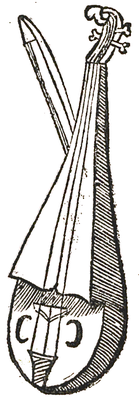Burkhdyn Dwarves
Perhaps the most sedentary of the Burkhdyn cultures, the dwarves of the high mountains are a unique bridge culture. Unlike most dwarves, they live not below ground but in cities and villages on the surface — the hard-frozen tundra and unstable rock structure of the Burkhdyn Gazar help amplify this tendency.
Government
Unique among the high cultures, the dwarves have a single centralized government. Their Tena (king) rules from Yul Kantari, one of the few legitimate cities in the mountains. A council of nobles informs the Tena, who technically governs at their request and is subject to removal by a vote of no confidence. In practice, no Tena has been deposed in living memory and the position is entirely hereditary. Local towns have their own ruling families, whose barons swear fealty to the Tena.
A strong central government and regular taxes ensure that the Burkhdyn dwarves have more infrastructure than other mountain folk: roads in particular allow for heavier mining operations than the other high folk employ.
Commerce
The dwarves are most noted for their mining and lapidary work. Emeralds, rubies, garnets, aquamarines, sapphires, topaz, amethyst, citrine, rose quartz, and peridot are among the treasures found beneath the mountains, especially around the mining city of Yul Fesh. All dwarven cultures have skilled gemcutters, but the artisans of the Burkhdyn may be the best in the world: perhaps their proximity to the sky gives them a finer eye for capturing the sun’s sparkle in their work, or perhaps the lack of mithril and adamantine sends their finest artisans into the lapidary stool instead. Regardless, their gemwork is a major export, bringing in the hard currency needed to finance further mining operations.
The Burkhdyn are also a major source of precious metals for the region, especially silver but also gold and copper. Ingots are shipped out through Washir or Khuldani Purda. Their metalwork, while perhaps not as fine as that of the Akkur Mons, is still of fine quality, and dwarven armor and weapons are in high demand throughout the region.
Dwarven weaving is also fine work, with almost felt-like wool textiles dominating their wardrobes.
Like other mountainfolk, the dwarves are consummate hunters. Spring time sees hunting groups fan out from Yul Kantari and the villages into the highlands, in search of quarry to refresh depleted stores of meat and provide much-needed furs and skins.
 Culture and Entertainment
Culture and Entertainment
The dwarves are great poets, with epic tales of both heroic achievements and comedic failures. Improvisational storytelling is a favorite post-dinner pastime, with the most popular stories evolving into epic verse. The most valued poets work no other job, moving from village to village and making a living solely through their tales and jokes.
Dwarven music ranges from somber and funereal to upbeat and jaunty. Of particular note, the rebec is a dwarven invention: a stringed instrument played with a bow, capable of playing a light-hearted jig or a maudlin dirge. The Burkhdyn goliaths are particular fans of the instrument, and combined goliath/dwarven choirs are a musical delight to witness. Dwarven hunters are well aware of this, and will often favor carrying a rebec over almost anything else: a seeming frivolity could be a life-saver if the aid of a goliath hunting party is needed.
Dwarves have little wrestling tradition, instead turning toward the brute force simplicity of boxing (presumably a miners’ tradition to blow off steam at the end of the day). The tough dwarven physique can result in protracted matches, with one 30-round match documented at a harvest festival party.
The dwarves and orcs of the mountains view each other with deep suspicion; while the batya applies to all, it is often stretched to its limits when the two must interact.
Religion and Customs
The dwarves of the Burkhdyn follow Samwah, which is the name they have given to Semoz. It’s believed that this is a holdover from their migration south from the Akkur Mons. They view Samwah as a protector of caves and the underground, as the moon who fell to earth and is now buried.
↞ Previous: Alpine Tuugan Next: Burkhdyn Goliaths ↠